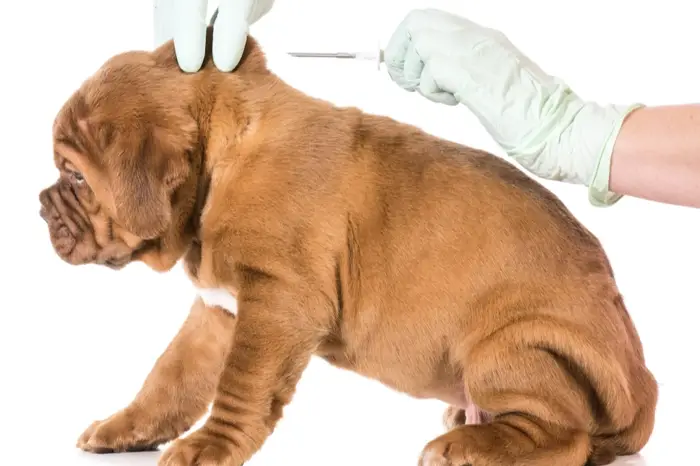Lost pets come home with Peeva.
The Importance of Dog Identification Chips for Your Pets
We must ensure that our dogs are easily identifiable if they get lost. Dog identification chips, or microchips, play a crucial role in this process. They offer a modern and reliable method of keeping our pets safe. Let’s find out what dog identity chips are and why they are so critical.
Understanding Dog Identity Chips
Dog identity chips, or microchips, are tiny electronic devices roughly the size of a grain of rice. These chips are implanted just under the skin of a dog, typically between the shoulder blades. The procedure is quick, akin to a regular vaccination, and is generally well-tolerated by dogs.
Each microchip contains a unique identification number. This number doesn’t hold any personal information itself but acts as a key to a national pet recovery database where the dog owner’s contact details are stored. When a microchip scanner is passed over the chip, it transmits the chip’s ID number, which can be used to retrieve the owner’s contact details from the database. This system is invaluable in reuniting lost pets with their owners and is much more reliable than traditional methods like collars and tags, which can be removed or become lost.
The Role of RFID Chip in Dog Identification

The technology at the heart of dog identity chips is RFID (Radio-Frequency Identification). This technology uses electromagnetic fields to identify and track tags attached to objects – in this case, the microchip implanted in the dog.
Here’s how it works:
Activation:
The microchip is passive and does not emit a signal on its own. It is activated when a scanner is passed over it.
Transmission:
Once activated, the microchip transmits its unique ID number to the scanner.
Database Look:
The scanner reads the number, which can then be entered into a pet recovery database to retrieve the owner’s contact information.
RFID technology in pet identification is effective because it doesn’t require a power source for the chip, making it a permanent identification solution. The chips are designed to last the lifetime of the pet, providing a secure and reliable form of identification.
The Benefits of Microchipping Your Dog
Microchipping your dog comes with a multitude of benefits, making it an essential aspect of pet care:
Permanent Identification:
Unlike collars or tags, microchips do not wear out, fall off, or become illegible. They offer a permanent solution to pet identification.
High Recovery Rate:
Dogs with microchips have a significantly higher chance of being reunited with their owners if they get lost. It’s a straightforward tool for shelters and veterinarians to identify lost pets and contact their owners.
Legal Compliance:
In many areas, microchipping is legally required for pet ownership. Complying with these laws not only keeps you on the right side of the law but also ensures your pet’s safety.
Travelling with Pets:
For pet owners who travel, microchips can be essential. Many countries require pets to be microchipped as part of their entry requirements.
Peace of Mind:
Knowing that your pet has a microchip can give you peace of mind. In case your pet gets lost, a microchip increases the chances of a happy reunion.
Where Can I Get My Dog Microchipped?
Determining where to get your dog microchipped is an essential step in ensuring your pet’s safety. Fortunately, there are several convenient and accessible options:
Veterinary Clinics:
Most veterinarians offer microchipping services. It’s a routine procedure that can often be done during a regular check-up or vaccination appointment.
Animal Shelters:
Many animal shelters provide microchipping services, sometimes at a lower cost than veterinary clinics. This option not only supports the shelter but also secures your pet’s identification.
Special Microchipping Events:
Keep an eye out for microchipping events in your community. These events, often hosted by animal welfare organisations, offer affordable microchipping services.
Pet Stores with Clinics:
Some large pet store chains have in-store clinics that offer microchipping services. These stores can be a convenient option for pet owners.
When choosing where to microchip your dog, consider factors like cost, convenience, and the reputation of the establishment. Remember, the procedure is quick and generally causes minimal discomfort to your pet.

Registration and Maintenance of Dog Identity Chips
After your dog is microchipped, the next crucial step is to register the chip and maintain the associated information:
Registration Process:
The unique ID number on your dog’s microchip must be registered along with your contact details in a national pet recovery database. This step is vital for the microchip to serve its purpose.
Accuracy of Information:
Ensure that all information in the database is accurate. This includes your name, address, phone number, and any alternate contact information.
Regular Updates:
It’s important to update your information in the microchip registry if you move, change your phone number, or transfer ownership of the pet.
Annual Checks:
Make it a habit to check your pet’s microchip information annually, possibly during a regular veterinary visit. This ensures the chip is still functional and the information is up-to-date.
Lost Pets:
In the unfortunate event that your pet is lost, having a registered and up-to-date microchip significantly increases the chances of a reunion.
Pet ID: Beyond the Microchip
While microchips are a reliable form of pet identification, they work best when used in conjunction with other methods:
Collars and Tags:
A collar with an ID tag that includes your contact information is an immediate way for someone to reach you if they find your pet. Ensure the collar is comfortable and the tag is durable.
Tattoos:
Some pet owners opt for tattoos as a form of identification. These are usually a series of numbers and letters placed inside the pet’s ear or thigh.
Digital Tags:
Modern technology has introduced digital tags that can be scanned with a smartphone, revealing the pet’s information stored online.
Keeping Photos:
Maintain current photos of your pet, which can be useful for identification purposes or in case you need to create lost pet posters.
These additional forms of identification can act as a first line of defence if your pet gets lost, complementing the microchip’s role in reuniting lost pets with their owners.
Legal Implications and Requirements for Dog Microchipping
Understanding the Law:
In many regions, microchipping dogs is not just a recommendation but a legal requirement. These laws are in place to aid in the quick recovery of lost pets and to hold pet owners accountable for their animals.
Regional Variations:
The requirements for microchipping can vary significantly from one region to another. In some areas, microchipping is mandatory for all dogs over a certain age, while in others, it may be required only for specific breeds or in certain circumstances, such as for travel.
Legal Consequences:
Failure to comply with microchipping regulations can result in fines or other legal repercussions. In some cases, it might also affect your ability to reclaim your pet if they are lost and taken to a shelter.
Updating Information:
It’s important to remember that the legal responsibility doesn’t end with microchipping your dog. Keeping the microchip’s registration information up to date is often a legal requirement as well.
Conclusion: Prioritising Your Dog’s Safety with Identification Chips
Microchipping offers a simple yet highly effective way to ensure your dog’s safety and your peace of mind. It’s a small step that can make a big difference in reuniting you with your pet should they ever get lost. Beyond the practical benefits, microchipping is also a statement of responsible pet ownership and, in many cases, a legal requirement.
So, if your dog isn’t microchipped yet, consider taking this crucial step. Visit your local vet or check for microchipping services in your area. Remember, in the journey of caring for your furry friend, every measure you take, no matter how small, contributes to their safety and wellbeing. Let’s embrace this technology not just as a legal obligation, but as a fundamental aspect of caring for our beloved pets.
Peeva: Where Lost Pets Find Their Way Home
Transform your pet’s microchip into a lifeline. 24/7 phone support and lost pet alerts ensure your pet gets the help they need, when they need it.
You Might Be Interested In
- Health, Wellness, Nutrition
- Health, Wellness, Nutrition, Microchipping






